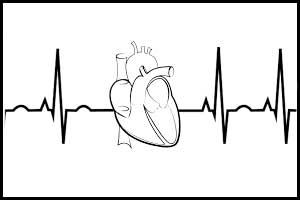- Home
- Editorial
- News
- Practice Guidelines
- Anesthesiology Guidelines
- Cancer Guidelines
- Cardiac Sciences Guidelines
- Critical Care Guidelines
- Dentistry Guidelines
- Dermatology Guidelines
- Diabetes and Endo Guidelines
- Diagnostics Guidelines
- ENT Guidelines
- Featured Practice Guidelines
- Gastroenterology Guidelines
- Geriatrics Guidelines
- Medicine Guidelines
- Nephrology Guidelines
- Neurosciences Guidelines
- Obs and Gynae Guidelines
- Ophthalmology Guidelines
- Orthopaedics Guidelines
- Paediatrics Guidelines
- Psychiatry Guidelines
- Pulmonology Guidelines
- Radiology Guidelines
- Surgery Guidelines
- Urology Guidelines
Novel micro pacemaker opens new options for cardiac pacing

A novel micro pacemaker system which allows cardiac pacing without entering the vascular space or surgical exposure of the heart has been demonstrated by researchers at Children's Hospital Los Angeles and the University of Southern California. The study is published in the journal Circulation: Arrhythmia and Electrophysiology.
Yaniv Bar-Cohen, director of the Southern California Consortium For Technology and Innovation in Pediatrics, and colleagues have developed a percutaneous pacemaker for implantation of an entire pacing system into the pericardial space -- a breakthrough that may open up new cardiac pacing options for children and adults.
Traditional systems - called transvenous - have been a primary solution for permanent pacing, however, many patients with slow or irregular heartbeats are not considered good candidates for such devices. The electrode wires are passed through veins into the right ventricle or atrium, often traveling long distances, making lead failure a challenge. Leadless systems are located inside blood vessels, which increases the risk of dislodgement and infection.
The micro pacemaker -- inserted through a single tiny incision -- avoids an invasive surgical procedure and the complications related to long pacemaker leads.
"Much about this device and its implantation is novel -- starting with implanting an entire pacing system in the pericardial space in a minimally invasive fashion, which has never been done before," said Dr. Bar-Cohen.
"Our work on the fetal pacemaker served as a bridge to this development," said Bar-Cohen. Unlike the fetal system, the micropacemaker has the potential to benefit a much larger population, including children, people born with congenital heart disease and adults for whom traditional pacemakers are less than ideal.
The research team performed percutaneous implantations in a model system, with a focus on improving the implantation tools and techniques from one experiment to the next. In the final procedure, they implanted a functional pacing system, achieving up to five days of pacing.
The investigators are seeking an industry partner to collaborate on further development of the device, which features several innovations. A flexible short lead acts as a spring-loaded hinge between the pacemaker body and a corkscrew electrode implanted perpendicularly into the heart surface. A sheath developed by the team secures positioning with retractable features. After deployment, the hinge returns to a 90-degree angle, as the micropacemaker orients itself to minimize system stress.
The new micropacemaker enables pacing of the left ventricle (LV); most systems only pace the right ventricle. A growing body of research supports the benefits of LV pacing for better cardiac synchrony.
In addition, the design allows the formation of a biological support matrix that results from natural fibrosis. "As a mechanical support, this living connective tissue has benefits over the use of synthetic polymer, which can degrade over time," said Loeb. He added that further testing of the device is ongoing.
For further reference log on to https://doi.org/10.1161/CIRCEP.118.006307

Disclaimer: This site is primarily intended for healthcare professionals. Any content/information on this website does not replace the advice of medical and/or health professionals and should not be construed as medical/diagnostic advice/endorsement or prescription. Use of this site is subject to our terms of use, privacy policy, advertisement policy. © 2020 Minerva Medical Treatment Pvt Ltd